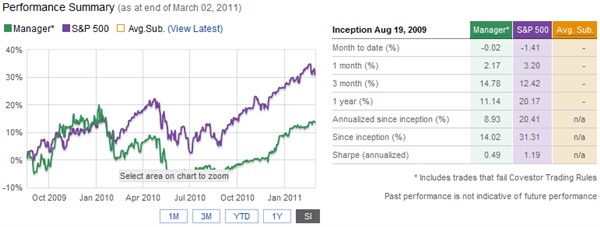Author: Patrick Clark
Covestor model: Market Neutral Growth
Disclosure: No position in EPI or HAO
Last month, I discussed what appeared to be contradictory market trends. Specifically, the Indian equity market as measured by the ETF EPI looked quite bearish, while most other equity markets around the world and all commodities that I watch looked bullish technically. EPI was set up very well for a bearish trade, but I wanted to see some confirmation of its move in commodities, other equity markets, and in VXX, the S&P 500 volatility index.
A lot has developed over the past 30 days and some of the technical changes I was looking for have begun to take place. The first such move is in the VIX. VXX remains solidly in a downtrend as measured by the 30 week moving average. However, the fight between VIX bears and bulls has begun in a big way, with VXX weekly volume surging. The volume shows the potential to move VXX into an uptrend even though the price has quite a way to go. In addition, the Chinese equity market, as measured by the ETF HAO, has crossed below its 30 week moving average. The Chinese market’s confirmation of EPI’s move coupled with the multi-year high volume spike in VXX is convincing me that EPI’s reversal from uptrend to downtrend is the real thing as opposed to a head fake.
The correlation between equity markets and commodity markets could change from positive (moving together) to negative (moving in opposition). I suspect that commodities over the intermediate term will move based on political disruption in oil-producing regions rather than the expectation of commodity demand based on economic outlook. In spite of my negative fundamental outlook on equities, I maintain a bullish stance with a 32% bullish long/short bias based on the technical trend.
The US dollar continues to look bearish and competing major currencies generally look bullish. Inflation is clearly taking hold and quietly destroying purchasing power. I will monitor and protect purchasing power of my model going forward. Unfortunately, the vast majority of investors will see only the rising equity markets and not notice the destruction of purchasing power until it has been significantly eroded.



